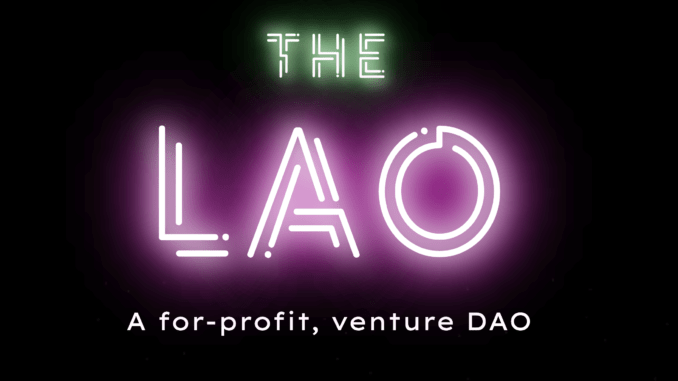
The LAO or Legal Autonomous Organisation, a blockchain- and smart contract-based investment vehicle that seeks to redefine the joint-stock company, is calling for investors in what will initially be a $2.5m experimental venture fund.
The project is planned to go live later this month and will use the smart contract software of OpenLaw and MolochDAO. It is backed by Ethereum development company ConsenSys and it will also make use of oracle system Chainlink to enable fiat currency transactions in US Dollars as well as digital currencies.
The goal is to try and see if this approach to operating a new type of corporate structure will work. To do this, the LAO is inviting up to 100 ‘accredited investors‘, which can be individuals or investment entities, to purchase 1% ‘blocks’, up to a maximum of 9% of the total available fund. The 1% token blocks are valued at present at $25,000.
In return investors will receive LAO tokens and can together decide what to invest in. The LAO’s investors will focus their attention on early stage Ethereum-based startups.
All well and good. But you may ask: why do this?
Here’s a few points. First, this will be a ‘live’ proof of concept that moves beyond the failings of the DAO. And, as the backers point out, the LAO uses various smart contracts to administer its activity. So, this will be an important test of the technology in what will be a real investment fund stacked with people’s real money. I.e. if it all goes pear-shaped presumably people could lose their invested cash. In short, this is more than a pilot. Likewise, if it works, it could start a wave of growth in this direction.
Primarily, the smart contracts will be used to facilitate:
- collecting members’ initial contributions to the LAO;
- voting;
- delegating voting to third parties;
- funding investments;
- distributing proceeds; and
- rage quitting
For example, rage quitting gives members a degree of control as to their participation in The LAO and the use of any contributed capital.
Once an investment is authorised by a majority vote of the members, all members will have the right to opt out of the investment and receive any un-deployed capital that they contributed to the LAO back (i.e., ‘rage quit’).
The right to rage quit is accounted for in the operating agreement and facilitated via the DApp and underlying smart contracts.
So, it will have some novel capabilities, but that’s not the main point. The really interesting part is the following, best explained by ConsenSys itself:
‘The industrial era birthed the joint-stock company, a legal construct that helped fuel tremendous innovation and global growth, one that some have credited as being one of the most important innovations ever invented.’
I.e. while we tend to focus on how technology changed the world in the 18th and 19th centuries when we think of the Industrial Revolution, it was also innovations in finance that enabled rapid change by creating a legally reliable construct to allow people to pool capital to invest and then share in the ownership of those invested in assets.
Without the ability to provide reliable and flexible legal means to invest in the new wave of technology that arrived during that time, much of it may not have got off the ground. You don’t get steam engines if you can’t finance their development and eventual sale one day.
What OpenLaw, ConsenSys and others are now exploring is the idea that we are entering a new era of corporate entity, which is decentralised and more efficient to operate on one level, but is not a totally anarchic, utopian ideal either. Instead the LAO is very much grounded in real world law.
For example, the LAO will be organised as a legal entity – in this case a Delaware limited liability company – primarily administered via an online application (a ‘DApp’) and related smart contracts.
Is this a big deal? It largely depends on whether you believe in the idea of decentralised investment vehicles that operate via digital currencies, activate transactions through smart contracts and record data with DLTs.
If you don’t see the advantages gained in efficiency and flexibility from this approach it probably won’t float your boat. If however, you do feel that there’s something to be said for rethinking corporate structures and investment vehicles, then the LAO may be of interest.
Naturally, none of the above is investment advice and this news story is for informational purposes only. Also, as you can see, this is clearly at the highly experimental end of the investment spectrum. You should certainly start off by reading the background to the LAO and seek to understand the risks involved.